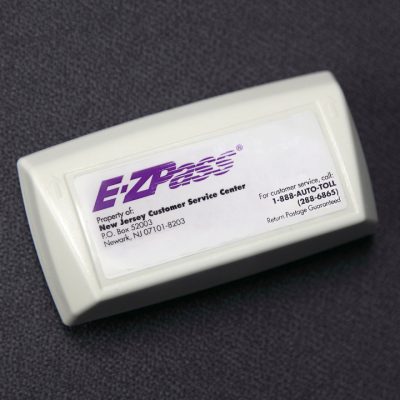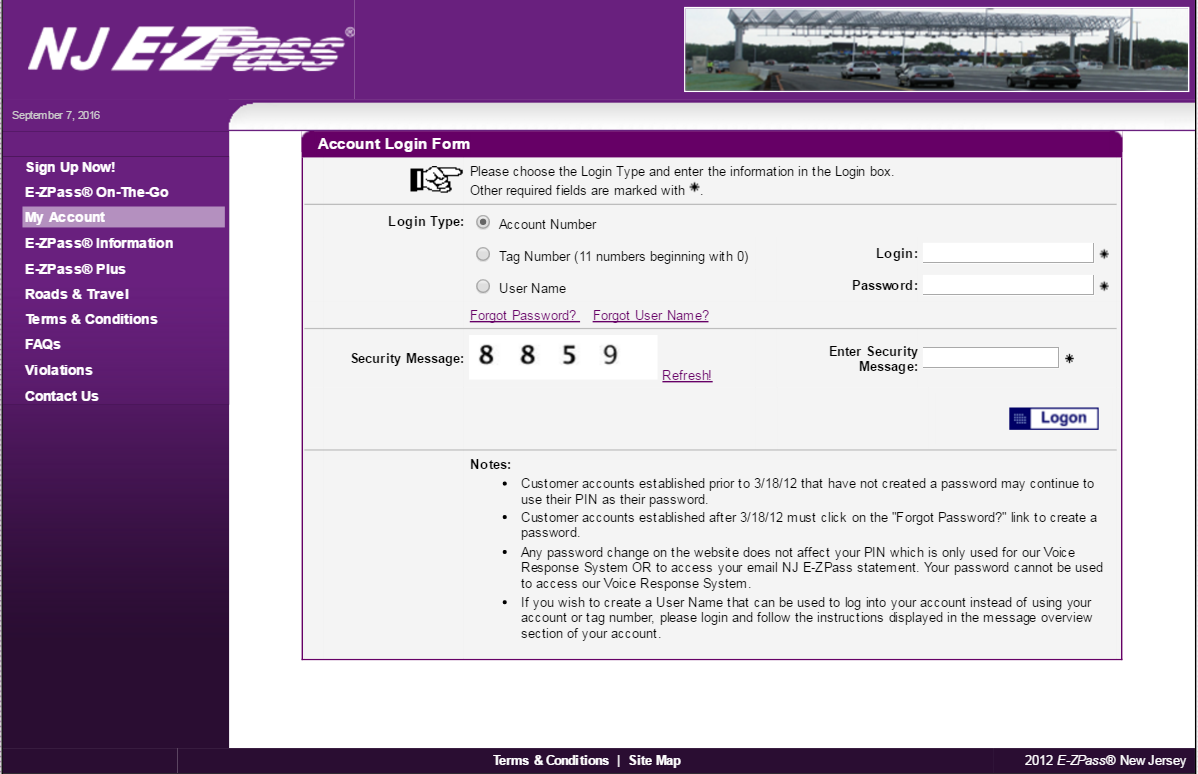
The Commission’s eight toll bridges are outfitted to handle E-ZPass® electronic toll transactions. E-ZPass® is used in more than 85 percent of Commission’s toll transactions system-wide and that percentage increases monthly.

E-ZPass® is a toll-collection system that enables motorists to pay their tolls electronically through pre-established accounts prepaid and replenished with a credit card or check. It is accepted by more than 35 toll or transportation agencies in 20 states, from Maine to Florida and west to Minnesota. More than 59 million E-ZPass® devices are currently in circulation and the number grows each year.
E-ZPass® makes driving more convenient. It reduces travel times, decreases motor-vehicle emissions, and helps motorists cut down on fuel costs.
The Commission’s E-ZPass service provider and toll processor is the New Jersey Regional E-ZPass® Customer Service Center (NJ E-ZPass Group) which serves seven toll agencies located in or serving the states of New Jersey, Pennsylvania and Delaware.
NJ E-ZPass® Customers who wish to contact the DRJTBC’s E-ZPass® Department, click here.
Benefits of using E-ZPass®:
- Accepted in every Commission toll plaza lane
- Enhances toll payer convenience
- Improves fuel consumption
- Decreases environmentally harmful emissions
- Receives high customer satisfaction

Getting an E-ZPass Account is E-Z
New customers interested in acquiring E-ZPass accounts can apply by clicking an option below.
E-ZPass® Query Form
New Jersey E-ZPass® Customers, please fill out the form below to contact the Delaware River Joint Toll Bridge Commission’s E-ZPass® Department. Non-New Jersey E-ZPass® customers, please contact your home agency with any questions or concerns.
* Indicates required field.
The E-ZPass® Group is an association of more than 35 toll and transportation agencies in 20 states (a Michigan bridge/tunnel agency was added in 2023) that operates the successful E-ZPass® electronic toll collection program.
Delaware River Joint Toll Bridge Commission (DRJTBC) affiliated E-ZPass transponders are issued and administered by the regional New Jersey E-ZPass Customer Service Center, which services the DRJTBC, New Jersey Turnpike Authority, Delaware River Port Authority, Delaware River & Bay Authority, South Jersey Transportation Authority, Burlington County Bridge Commission, and Cape May County Bridge Commission. (Click on the image to view in full resolution.) (Note: This map does not reflect the addition of the Bay City Bridge Partners [Detroit, MI.] in 2023.)
Making Tolling Better
The Delaware River Joint Toll Bridge Commission’s eight toll bridges operate with cashless all-electronic tolling (AET) collection systems. The Commission now handles only E-ZPass (lowest toll rates) and TOLL BY PLATE (highest toll rates) transactions. The Commission ended nearly 87 years of in-lane cash toll collections approximately 11 p.m. January 12, 2025.
The Commission also has initiated efforts to convert all eight of its toll bridges to highway-speed AET collections by 2032. The only toll bridge to offer such service is the Scudder Falls (I-295) Toll Bridge, which opened with a modern-day all-electronic toll gantry in 2029. Two other Commission toll bridges have open-road Express-E-ZPass facilities — two such lanes at the I-78 Toll Bridge and one such lane at the Delaware Water Gap (I-80) Toll Bridge — but these locations still have adjoining conventional toll-booth plazas slated for demolition in future years.
The Commission plans to convert all of its toll bridges to highway-speed AET collections one location at a time each year starting with the New Hope-Lambertville (Route 202) Toll Bridge in 2025. Under the process, former cash-collection toll booth plazas will be removed and replaced with newly installed overhead gantries outfitted with E-ZPass toll tag readers and cameras and other equipment for recording TOLL BY PLATE transactions.
The Commission urges all toll customers to acquire E-ZPass accounts for purposes of convenience and cost savings. The Commission’s TOLL BY PLATE toll rates are up to double the cost of comparable E-ZPass rates. (Notes: Toll rates for non-E-ZPass-equipped vehicles are higher than what E-ZPass users pay due to additional processing costs. The Scudder Falls Toll Bridge never had cash toll booths and has operated with highway-speed all-electronic tolling since opening on the night of July 9, 2019.)
AET is increasingly being used in other states and countries. The Pennsylvania Turnpike Commission fully converted to AET in 2020. Other AET systems are in use at NY-NJ Port Authority bridges and tunnels, the New York State Thruway, the Golden Gate Bridge, Maryland’s Intercounty Connector/MD, and along toll roads in Florida, Texas and California.

